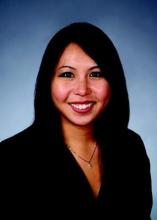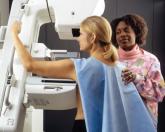More than 20 states have enacted so-called breast density notification laws, but the impact has varied. And part of the problem, experts say, is that ob.gyns. don’t have enough information to advise patients about their secondary screening options.
“If primary care clinicians can’t answer the patients’ questions adequately, then this law could potentially negatively impact patients,” said Dr. Kathleen Khong, a radiologist at the University of California, Davis, who has been researching the impact of California’s notification law, which went into effect in 2013.
Connecticut became the first state to enact a breast density notification law in 2009, requiring that all patients be given information about their breast density on their mammography report. For women with dense breasts, the law mandated specific language on the report stating that patients “might benefit from supplementary screening tests, which can include a breast ultrasound screening or a breast MRI examination.”
Since then, another 20 states have enacted similar laws. And patient advocates are pushing Congress to set a minimum federal standard for notifying patients about their breast density.
But as more states adopt notification mandates, researchers have found that the implementation is often uneven, in part because ob.gyns. and other women’s health care providers don’t know how to counsel patients about the pros and cons of further imaging.
For instance, in Connecticut, some practices refer 100% of women with dense breasts for whole-breast ultrasound screening, while other practices refer none. And only 45% of Connecticut women who were referred for follow-up ultrasonography activity received it, according to Dr. Priscilla Slanetz, a radiologist at Beth Israel Deaconess Medical Center in Boston, and her colleagues (N. Engl. J. Med. 2015;372:593-5).
Dr. Slanetz and her colleagues were looking at the implementation in Connecticut because their home state of Massachusetts is considering a breast density notification of its own.
“It became very clear to myself and my two colleagues that although we’re very aware of breast density, our primary care providers in particular really have no knowledge about it,” Dr. Slanetz said.
Dr. Sharon Mass, an ob.gyn. in Morristown, N.J., agrees, adding that education is a challenge because of a lack of consistent evidence to help guide physicians as they encounter questions from their patients.
While about half of women have dense breasts, the existing notification laws don’t account for the fact that some women have heterogenously dense breasts, while others have extremely dense breasts, Dr. Mass said.
The need for more education is echoed in a recent study led by Dr. Khong at the University of California, Davis. According to a survey of 77 physicians in the UC Davis Medical Center following the implementation of a notification law in April 2013, roughly half (49%) reported no knowledge of the legislation and 32% noted an increase in patient levels of concern about breast density. About 50% of women receiving mammograms receive the notification about dense breasts, according to the UC Davis researchers.
The survey found that 55% of respondents were “somewhat comfortable” and 12% were “not comfortable” with breast density questions from their patients. Three-quarters of survey respondents said they wanted more education about the breast density law and its implications for primary care.
But even education is going to be a challenge, said Dr. Khong.
“Breast density is a very complicated and controversial topic and there is no straight answer for every patient,” Dr. Khong said, adding that there is no prospective study that spells out what specific type of imaging is appropriate for women with varying degrees of breast density.
“So even if we teach primary care physicians, we can’t give them a black and white answer for every patient,” she said. “It is very difficult. It is very case by case.”
Dr. Mass added that because of the case-by-case nature, the American Congress of Obstetricians and Gynecologists has “actually been opposed to every single one of these initiatives in every state because there is not the support at the grassroots level or the physician level to understand what to do with this information.”
Dr. Khong said that UC Davis is working to address these issues by surveying other academic medical centers and ultimately developing an education plan for primary care physicians, which could range from educational conferences to brochures or PowerPoint sources for self-learning, to a dynamic algorithm that will help guide clinicians to the appropriate kinds of supplemental screening.
The New Jersey section of ACOG has developed a brochure for physicians aimed at helping them address patient concerns around breast density and further screening based on their state’s law. But “on a national level, [clear guidance] does not exist at all and [it] is a huge deficit,” Dr. Mass said.




